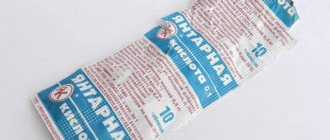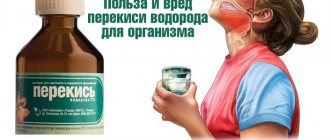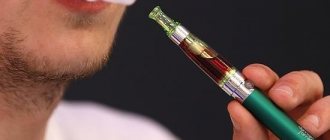Propylene glycol is a colorless organic compound, almost odorless, transparent, viscous with a mildly sweet taste, also called 1,2-propanediol, propane-1,2-diol or α-propylene glycol to distinguish it from the propane-1,3-isomer. diol (β-propylene glycol).
The industrial method for producing propylene glycol occurs through propylene oxide. Various manufacturers use either a non-catalytic high temperature process from 200°C (392°F) to 220°C (428°F) or a catalytic method that occurs at temperatures from 150°C (302°F) to 180°C (356°F) ) in the presence of either an ion exchange resin, a small amount of sulfuric acid, or alkali.
Propylene glycol can also be produced by processing glycerol and biodiesel.
Important! Purchase propylene glycol only from official distributors to avoid counterfeiting!
Where is the substance used?
When you mention the complex name, a reasonable question arises: what is propylene glycol? It is just a very viscous liquid that can dissolve numerous substances, including acids, salts and alcohols. The virtually non-volatile substance is incapable of evaporation and does not enter into a chemical relationship with any ingredients. This makes it attractive for use in many industries. It is difficult to imagine modern industry without propylene glycol, since in the vast majority of countries in the world it is allowed for use without serious restrictions.
Below are the industries where propylene glycol is most commonly used.
- Food industry. It is added as a preservative to carbonated drinks, various preserves, and sausages.
- Production of plastics. The substance is part of copolymers, which are the basis for the manufacture of plastic products.
- At home. The ability of propylene glycol to retain heat is reflected in its use as a filler component in various ventilation and heating systems.
- Cosmetics. Many lipsticks, lotions and other skin care products contain this compound. Some detergents and cleaning products contain polypropylene glycol, which is a polymer, as non-ionic active ingredients.
- Medicine. The substance is included in many medicines as an inert base. A huge number of tablets and powders contain this component.
- Production of electronic cigarettes. Propylene glycol and glycerin are the basis for use as a tobacco substitute.
Various small-scale production in the furniture industry, leather industry, as well as a number of other numerous areas of human activity allow the addition of propylene glycol.
Practical recommendations
Propylene glycol is not as dangerous a substance as some claim. But it has a sufficient number of warning signs and prohibitions. It is unlikely that you will encounter serious reactions to propylene glycol through adequate exposure to foods and cosmetics.
Read also Types of poisons: inorganic, systemic and natural
To protect overall health and hormone balance, there are several ways to avoid propylene glycol whenever possible:
It is important to read the ingredient list on products. Propylene glycol may also be labeled as "propane-1,2-diol" or E1520.- Buy cosmetics without natural chemical elements. To avoid an allergic reaction, you should only purchase beauty products from companies that list all the ingredients on their packaging and do not include propylene glycol in the description. The rule is not limited to just makeup. Lotions and baby wipes also make up the list of products that commonly contain this chemical.
- Avoid processed foods. It's best to stick to as many unprocessed, raw, or natural foods as possible.
Any of the substances may be potentially toxic in large doses, so there is no guarantee that propylene glycol and related substances will not be distributed at dangerous levels.
How does propylene glycol enter the body?
Due to the variety of uses of the product, it can enter the human body in numerous ways. Below are the most common cases of propylene glycol entering the human body.
- Through the skin. The substance is a liquid and has, although weak, fluidity. As a result of accidental exposure at work, this component, which is part of many products, can come into contact with the skin. Its level of absorption is insignificant, but with large doses of propylene glycol a toxic effect cannot be ruled out. The substance is included in many cosmetics, also applied to the skin.
- Inside. By using tablets, as well as consuming food products with the food additive code E1520 , a person contributes to the penetration of this substance in a bound state into the body.
- Inhalation. When inhaling contents from smoking electronic cigarettes, as well as during industrial leaks, propylene glycol can enter the bronchopulmonary structures.
Glycerin and propylene glycol are the main components of e-liquid
Storage of food and medicines does not affect the activity of the substance. Even tablets taken accidentally after the expiration date will not increase the toxic effect of propylene glycol.
Cosmetic
Initially, propylene glycol was actively used in the beauty industry as a substance to moisturize the skin.
The mechanism of action of the component is to block the release of H2O from the skin, so it is added to cosmetics such as deodorant, cream, and shampoo.
There is a flip side to the coin: there are cases when this chemical provoked the appearance of rashes and redness on the skin.
Despite the achievement of hydration, when using products containing propylene glycol, substances important for the epidermis are displaced, so the skin ages faster. Experts do not recommend using baby care products with this component due to the possibility of dermatitis.
Take the smoking test
What is the effect of the substance on the body
The harm of propylene glycol is difficult to assess unambiguously. The toxicity of the substance is so low that even at a dose of more than 60 grams taken orally, no serious changes in health occur. The content of this component per kilogram of food is no more than 0.5 grams. Metabolism of propylene glycol in the body occurs in the liver, then inactive breakdown products are excreted by the kidneys. The entire cycle takes no more than 12 hours. If a person weighs 60 kilograms, he must eat more than a hundredweight of food containing this ingredient in less than half a day. This does not fit into any reasonable framework, so propylene glycol is unlikely to be harmful if ingested through food.
An urgent problem is the inhalation method of exposure of this compound to the body. Propylene glycol in an electronic cigarette is part of the liquid that fills the smoking device. The concentration of this component entering the respiratory tract is extremely low. It does not have an irritating property, so the smoker does not feel any discomfort. E-liquid contains not only propylene glycol or glycerin, but also some other ingredients. In particular, this is water, which is a solvent, and flavorings are also possible.
So is propylene glycol in e-cigarettes harmful? For most relatively healthy people, absolutely not, as it is an extremely non-toxic compound. But the situation may change, and propylene glycol will become dangerous. This is possible in the following cases:
- individual pronounced sensitivity to the compound;
- the presence of serious diseases of the bronchopulmonary apparatus, in particular bronchial asthma or fibrosing alveolitis;
- severe nutritional depletion;
- the presence of acute respiratory disorders that affect the concentration of oxygen in the blood, in particular pneumonia;
- polyvalent allergy.
Each human body is absolutely individual in its sensitivity to any components. Even the most necessary ingredient can cause unwanted reactions in particularly sensitized citizens.
What are the potential dangers of propylene glycol?
Not all people carefully study the composition of each tablet, especially when it comes to auxiliary components. Taking the medicine can cause numerous undesirable reactions, but it can never be ruled out that some of them are not caused specifically by propylene glycol. Therefore, it is impossible to completely reject the possibility that poisoning is caused by this compound, or at least supported by it. The assumption is rather hypothetical, since such intoxication does not officially exist.
In rare cases, allergic reactions and skin rashes are possible
Any ingredient, even simple water, contained in an electronic cigarette can cause unwanted reactions. Inhalation may cause damage to the epithelium of the bronchial tree, which can cause discomfort and signs of intoxication in particularly sensitive people. What to expect in the clinical picture of the negative effects of propylene glycol? Potential clinical manifestations may include:
- labored breathing;
- sore throat;
- paroxysmal cough;
- allergic rash on the skin;
- suffocation caused by bronchospasm;
- disruption of the stomach or intestines.
With pronounced sensitization to the components of an electronic cigarette, classic anaphylactic shock with signs of laryngeal stenosis can develop, which can provoke respiratory arrest. Manifestations from the gastrointestinal tract can be so diverse that it is not always possible to associate their occurrence specifically with propylene glycol. Symptoms will likely resemble those of classic intestinal poisoning with vomiting and diarrhea.
Any tablet, especially one colored in any color, contains, in addition to propylene glycol, more than a dozen different form-building compounds. All of them are inert and do not react with other elements of the base or with the active ingredient. But any of them can cause undesirable manifestations, including symptoms of severe poisoning with individual high sensitivity to them.
How to protect yourself from the dangerous effects of substances
The thought immediately arises: why be careful if the compound is not toxic. Indeed, most people do not need to do this at all, since propylene glycol used for e-cigarettes or consumed orally is not likely to cause any adverse reactions. However, some categories of citizens should pay attention to this connection. First of all, we are talking about the following categories of people:
- allergy sufferers;
- those suffering from serious illnesses;
- those with poorly controlled respiratory problems, such as asthmatics;
- long-term skin diseases;
- severely emaciated, weighing less than 40 kg.
Elderly asthmatics are at risk!
But even absolutely healthy people should pay attention to the composition of the product they consume. A large number of preservatives in combination with each other can provoke numerous problems in the body, especially with long-term use of these compounds. Those people who have switched to electronic cigarettes hardly need to worry about whether the propylene glycol contained in them will cause serious harm to the body. If we compare the potentially negative effects of nicotine, the excipient in the liquid used during smoking will turn out to be absolutely harmless.
General characteristics of the chemical compound
Propylene glycol is a liquid chemical that is completely colorless. It has a faint aroma and a pleasant sweetish taste. This compound is produced from petroleum products using special technology . This substance can be obtained from acetol, various alcohols and glycerols.
This substance is highly soluble in aqueous media, ethanol, acetone and chloroform. The compound does not provoke corrosion, is characterized by low volatility and very low toxicity.
Almost half of all propylene glycol produced in the world is used to produce unsaturated polyester resins.











